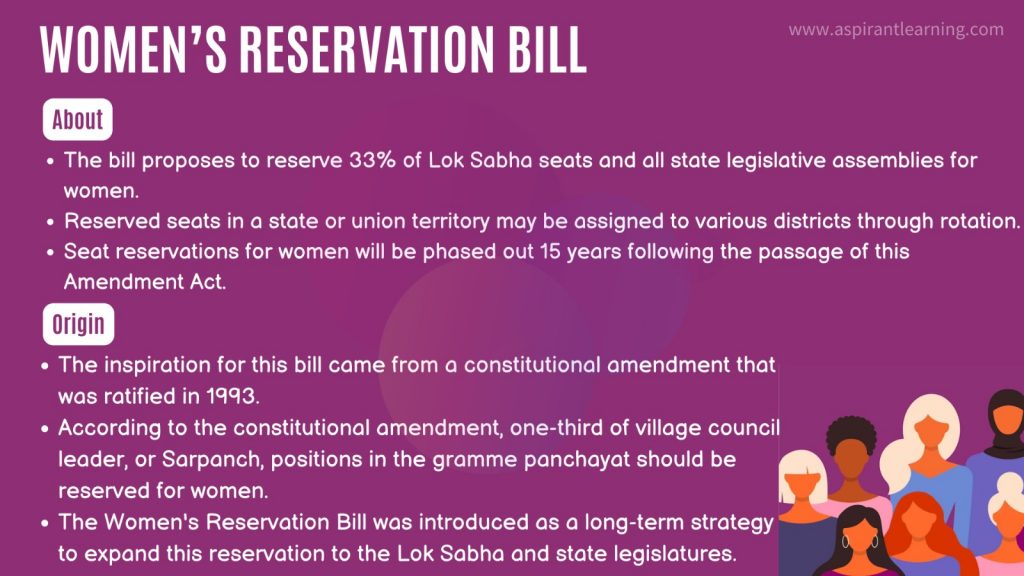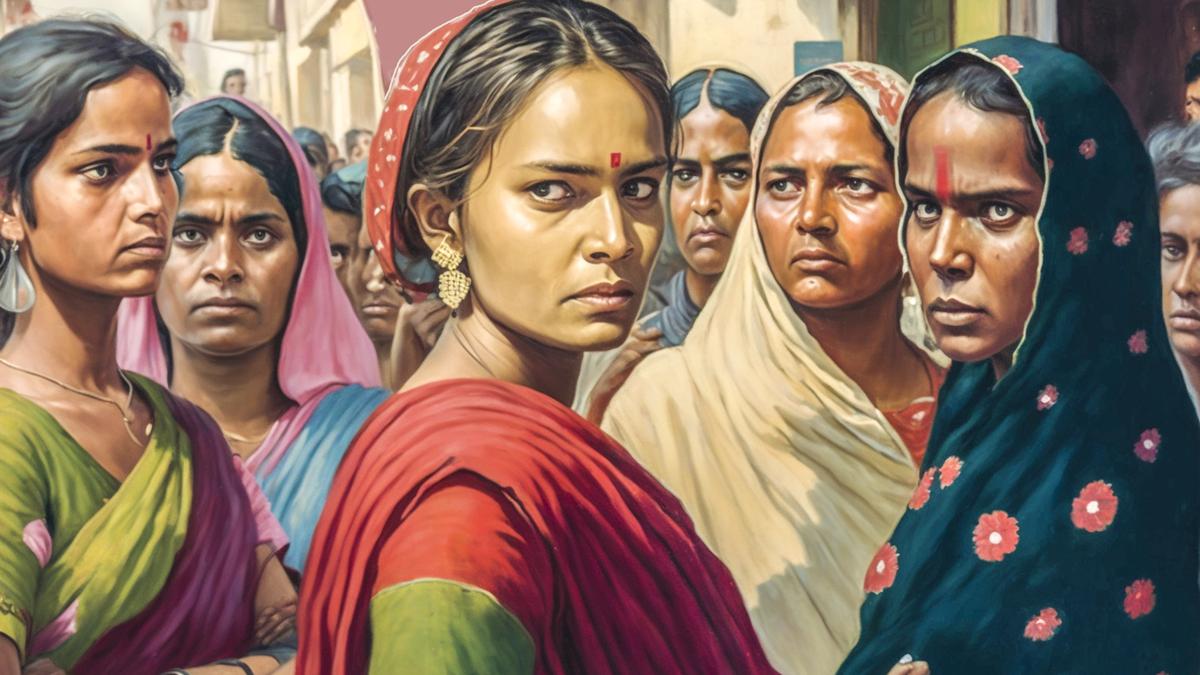News Highlight
The issue of reservation for women in politics can be traced back to the Indian national movement.
Key Takeaway
- According to the IPU, of which India is a member, women comprise 14.44% of the Lok Sabha’s total membership.
- A petition has been filed in the Supreme Court requesting that the lapsed Women’s Reservation Bill for 33% quota in the Lok Sabha and State Legislative Assemblies be reintroduced.
Current status of Women’s Representation in the Legislature
- Overview
- The number of women MPs in the Lok Sabha has steadily increased recently.
- The number of Women MPs in the Lok Sabha has increased from 45 (8.3%) in 2004 (14th Lok Sabha) to 81 (14.9%) in 2019 (17th Lok Sabha).
- The proportion of women in the Rajya Sabha has not increased similarly.
- Women have had a low representation in State Legislative Assemblies.
- Chhattisgarh has the highest (14.4%), followed by West Bengal (13.7%) and Jharkhand (12.4%).
- Even though the proportion of female legislators in the Lok Sabha reached a record high of 15% in the 17th Lok Parliament.
- Regarding the number of women serving in national legislatures, India ranks lower than 140 other countries.
- The global percentage of women in parliament was 26.1%, according to the Inter-Parliamentary Union (IPU) ‘Women in Parliament’ Report (2021).
- Nepal (33.6%), Bangladesh (20.9%), Pakistan (20.5%), and Bhutan (17.4%) outperform India in the region.
Reasons for low Representation of Women in Legislature
- Gender Gaps in Political Ambition
- Because the political selection process is likely viewed as very competitive, women’s predisposition to avoid competition may also play a role.
- Fear of ‘big politics,’ as well as self-doubt, stereotypes, and personal misgivings, frequently hinder even the most politically capable women from entering government.
- Family and relational issues can also influence women’s willingness to advance in their political careers.
- Patriarchal Society
- Due to gender inequality in areas such as education, access to resources, and the survival of discriminatory beliefs, there are still many barriers to how women are in leadership positions.
- The sexual division of labour: Most housework and child care is done by women.
- Women face cultural and social expectations that hinder them from engaging in politics.
Benefits of high Representation of Women in the Legislature
- Focus on Gender issues
- According to UN Women, more women in parliament contribute more attention to women’s issues.
- This can ensure an adequate policy response to gender issues and the implementation of women-sensitive policies.
- Gender Equality
- Political engagement by women is a vital requirement for gender equality and authentic democracy.
- It can assist in establishing public inquiries into women’s issues.
- As well as to use the findings to place them on government agendas and within legislative programmes.
- Accountability
- It promotes women’s direct participation in public decision-making and ensures more accountability for women.
Government Efforts
- The Women’s Reservation Bill 2008
- It proposes amending the Indian Constitution to reserve one-third of all seats in India’s Lower House of Parliament, the Lok Sabha, and all state legislative assemblies for women.
- Reservation for Women in Panchayati Raj Institutions
- Article 243D of the Constitution ensures women’s involvement in Panchayati Raj Institutions by mandating a one-third reservation for women.
- It is out of the total number of seats to be filled by direct election and the number of Panchayat chairpersons.
- Parliamentary Committee on Empowerment of Women
- The Committee on Women’s Empowerment was established for the first time during the 11th Lok Sabha of the Parliament in 1997 to improve the position of women.
- Members of the Committee are supposed to collaborate for women’s empowerment regardless of political affiliation.

Conclusion
- Increasing women’s legislative representation can significantly impact achieving gender-inclusive growth.
- It is time for political parties to put aside their differences and work together to increase women’s political involvement.
- Certain political parties have begun to field more female candidates.
- Yet, such methods must be institutionalised to be more effective.
- Furthermore, this will secure actual female empowerment.
Pic Courtesy: The Hindu
Content Source: The Hindu



